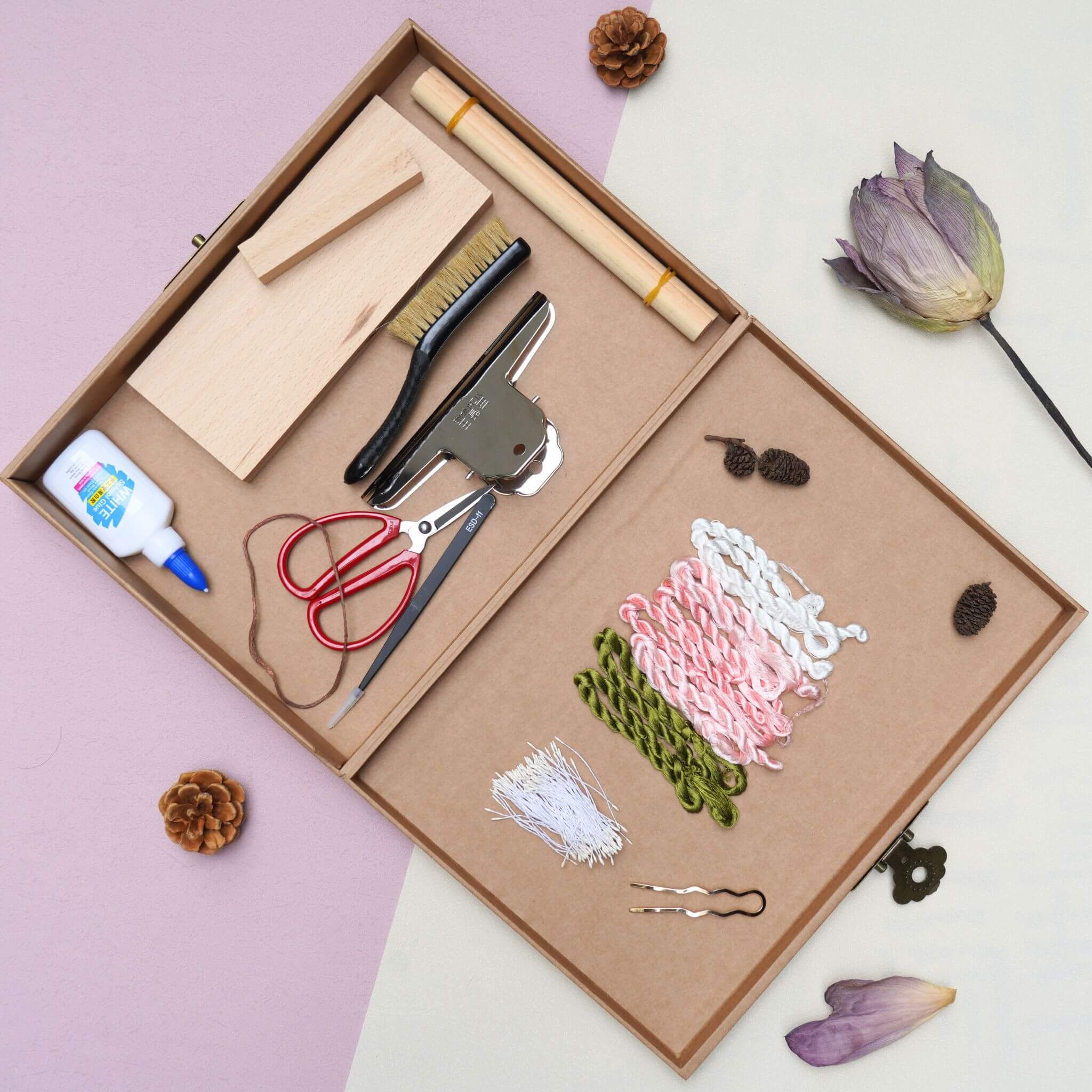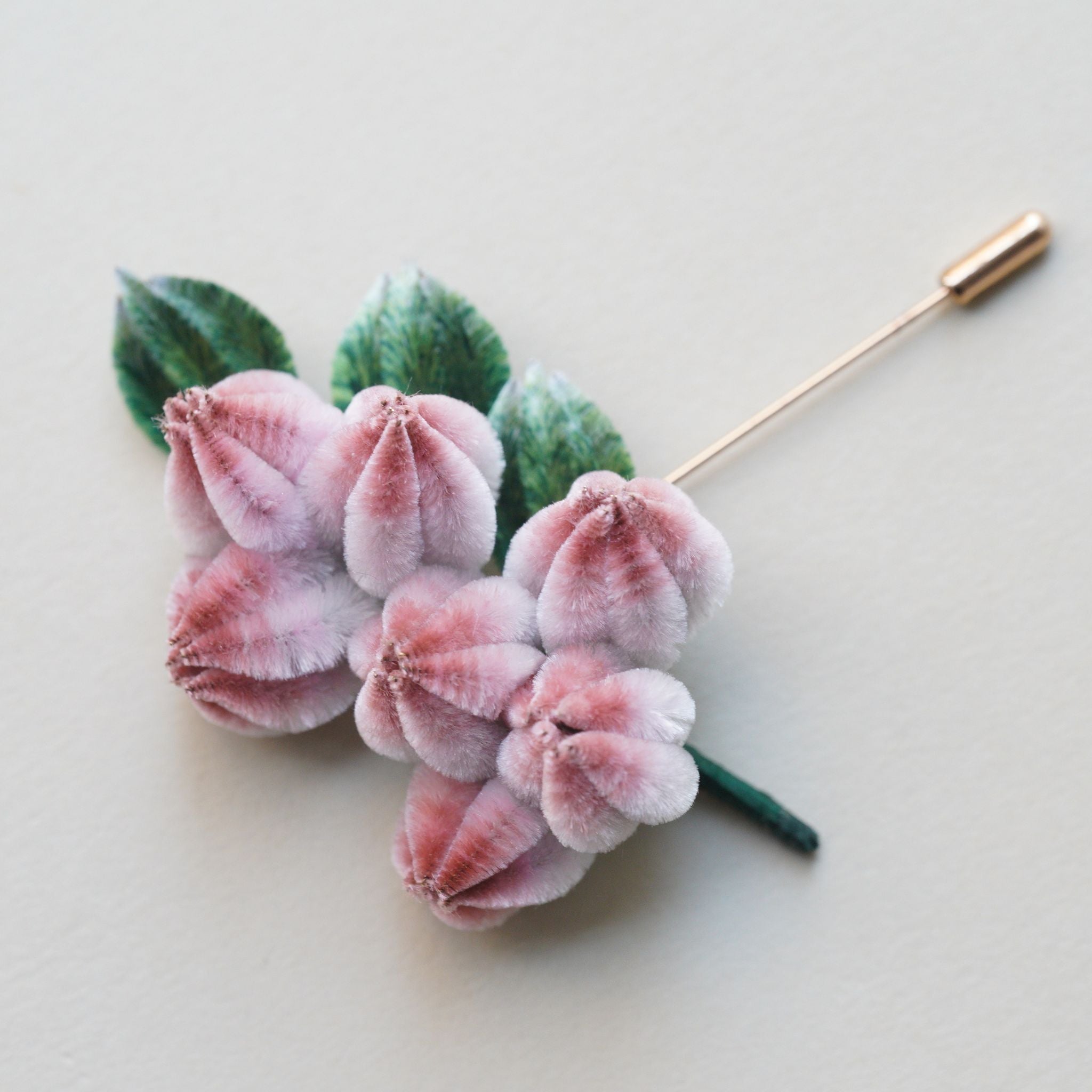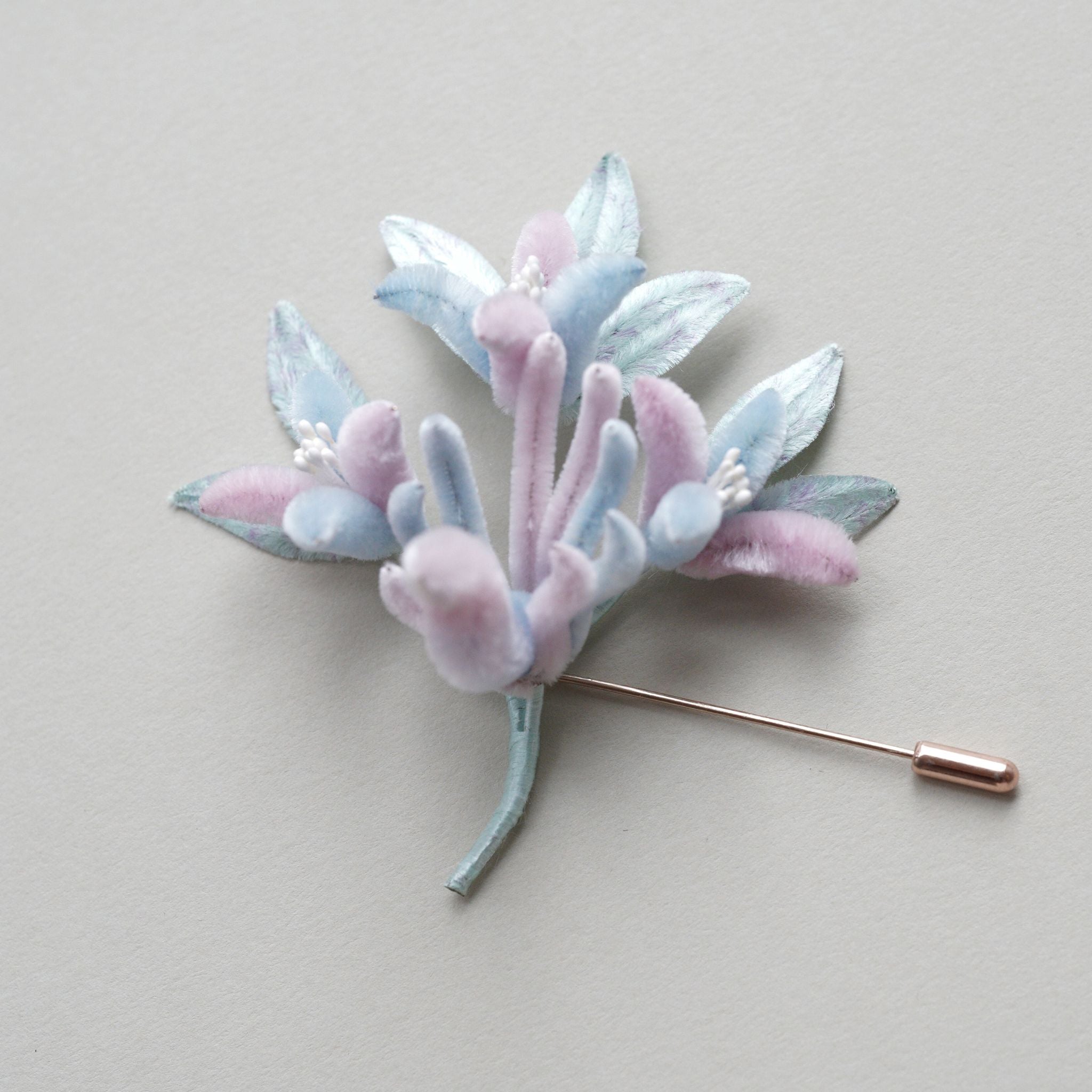In ronghua making, clamping copper wires and cutting silk strips are crucial steps that affect the flower's stability and appearance. Here are some tips to prevent silk strips from falling apart during these processes.
Common Mistakes by Beginners When Clamping Copper Wires:
-
Clamping Too Tight: Beginners often clamp copper wires too tightly, causing the silk rank too narrow, creating a "wasp waist" effect (Picture 1). A proper silk rank should have a consistent width from top to bottom (Picture 2). Copper wires should be snug but not overly tight, allowing slight movement. If you still can't control the width of silk rank, clamp one copper wire each at the top, middle, and bottom to fix the width before adding other wires.

-
Silk Rank Not Tightly Stretched: As shown in Picture 3, if the silk rank is loose, clamping copper wires will easily trap the edges of the threads. After brushing and arranging the silk rank, we need to stretch it straight, which will make it much easier to clamp the copper wires. Use metal clip, wooden clip, or sealing clip to keep the silk rank straight. Secure the top of the silk rank with a wooden or sealing clip and pull the clip from the top to the bottom to smooth it further. Adjust the distance between the top and bottom, keeping it consistent, and then fix the silk rank with a metal clip.

-
Fine Threads Rolled into Edges: As shown in Picture 4, the edges may trap fine threads. This is a common issue when clamping copper wires. Once threads get caught, it becomes increasingly difficult to manage. To prevent this, spray a bit of water to reduce flyaway threads. If threads get trapped, cut them off to prevent more from getting trapped.

Cutting Techniques:
-
Avoiding Common Mistakes: Beginners often cut silk strips in multiple attempts, which is incorrect. Cut in one go. If you find it difficult to do so or the silk gets pushed, it's likely an issue with the scissors. Using the right tools makes velvet flower making much easier.
-
Stabilizing the Silk Rank: Use your left hand to support the silk rank, placing it on your palm. If it is too long, you can cut it into smaller sections or fold it into your palm to keep it stable and prevent it from moving.

- Slow Cutting: Use your right hand to slowly and evenly cut along both sides of the copper wire. Ensure the cutting edge of the scissors maintains a safe distance from the copper wire to avoid cutting through it.
- Controlling Force: Use moderate force to avoid breaking or scattering the silk threads.
Preventing Falling Silk Strips:
- Pre-check:Before cutting, carefully check the silk rank and copper wires connection to ensure there are no loose or knotted sections.
-
Sharp Scissors: Use a sharp scissor to reduce damage to the silk threads. Dedicated scissor for ronghua flower making should not be used for cutting hard materials to avoid dulling. Maintain the scissor by regularly sharpening it and applying lubricant to prevent rust. "Chen Guang" scissors are recommended for their affordability and quality.

-
Use Auxiliary Tools: Use tweezers or other tools to fix the silk rank and copper wires in place, preventing movement or loosening during the cutting process.
-
Organization: After cutting, organize the silk strips and copper wires connection to ensure the threads are tightly wrapped around the copper wires without any looseness or detachment.



























